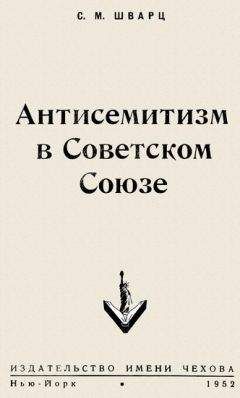Karoly, P. (Ed.) (1985). Measurement strategies in health psychology. New York: Wiley.
Kaufman, A. S. (1979). Intelligent testing with the WISC-R. New York: Wiley.
Kaufman, A. S. (1990). Assessing adolescent and adult intelligence. Boston, MA: Allyn amp; Bacon.
Kaufman A.S., Lichtenberger E.O. (1999). Essentials of WAIS-III Assessment. New York: John Wiley and Sons, Inc.
Kelley, T. L. (1927). Interpretation of educational measurements. New York: World Book Company.
Kelley, T. L. (1928). Crossroads in the mind of man: A study of differentiate mental abilities. Stanford, CA: Stanford University Press.
Keyser, AJ. amp; Sweetland R. C. (1987) (Eds.). Test Critiques Compendium. Kansas City, MO: Test Corporation of America.
Keyser, D. J., amp; Sweetland, R. С (Eds.) (1985). Test critiques (Vol. 1). Kansas City: Test Corporation of America.
Kleinmuntz, B. (1967). Personality measurement. Homewood, IL: The Dorsey Press.
Kleinmuntz, B. (1977). Personality measurement. New York: Krieger.
Kline, P. (1986). A handbook of test construction. New York: Methuen.
Kline, P. (1993). Personality. The psychometric view. London: Routledge.
Kline, P. (1994). The Handbook of Psychological Testing. London: Routledge.
Kline, P. (1998). The new psychometrics. Science, psychology and measurement. London:
Routledge.
Klopler, В., amp; Davidson, H. (1962). The Rorschach technique: An introductory manual. New York: Harcourt, Brace, Jovanovich.
Knobloch, H., amp; Pasamanick, B. (Eds.). (1974). Gesell and Amatruda's developmental diagnosis (3d ed). New York: Harper amp; Row.
Knobloch, H., Stevens, F, amp; Malone, A. F. (1980). Manual of developmental diagnosis. Hagerstown, MD: Harper amp; Row.
Koson, D., Kitchen, C, Kochen, M., amp; Stodolosky, D. (1970). Psychological testing by computer: effect on response bias. Educational and Psychological Measurement, 30, 803–810.
Kramer, D. A. (1983). Post formal operation? A need for lurther conceptualization. Human Development, 26, 91-105.
Krug, S. E. (1987). Psychware Sourcebook (2nd ed.). Kansas City, MO: Test Corporation ol America.
L. Resnick (Ed.) (1976). The nature of intelligence. Hillsdale, NJ: Erlbaum.
Labouvie-Viel, G. (1982). Dynamic development and mature autonomy: A theoretical prologue. Human Development, 25, 161–191.
Lambert, N. M. (1991). The crisis in measurement literacy in psychology and education. Educational Psychologist, 26, 23–35.
Lanyon, R. I. (1978). Psychological Screening Inventory: Manual (2nd ed.). Port Huron, MI: Research Psychologists Press.
Lanyon, R. I., amp; Goodstein, L. D. (1982). Personality Assessment (2nd ed.). New York:
Wiley.
Layzer, D. (1974). Heritability analysis ol IQ, scores: Science or numerology. Science, 183, 1259-66.
Lazarsleld, P. F. (Ed.) (1954). Mathematical thinking in the social sciences. Glencoe, IL:
Free Press.
Leahy, A. M. (1935). Nature-nurture and intelligence. Genetic Psychology Monographs, 17, 235–308.
Leary, T. (1957). Interpersonal diagnosis of personality. New York: Ronald Press.
Lewicki A. (1969). Podstawy diagnostyki psychologicznej. In Psychologia kliniczna. Warszawa: PWN, 81-155.
Lewontin, R. C. (1975). Genetic aspects ol intelligence. Annual Review of Genetics, 9, 387–405.
Lewontin, R. C, Rose, S., amp; Kamin, L.J. (1984). Not in our genes: Biology, ideology and human nature. Pantheon: New York.
Lindzey G. (1961). Projective techniques and Gross-culture research. New York: Apple-ton.
Locurto, С. (1990). The malleability of IQ, as judged from adoption studies. Intelligence, 14, 275-92.
Locurto, C. (1991). Sense and nonsense about IQ: The case for uniqueness. New York:
Praeger.
Loehlin, J. С (1979). Combining data from different groups in human behavior genetics. In J. R. Royce amp; L. P. Mos (Eds.), Theoretical advances in behavior genetics (pp. 303-34).
Loehlin, J. C. (1992). Genetics and personality. Thousand Oaks, CA: Sage.
Loehlin, J. С (1992). Using EQS for a simple analysis of the Colorado Adoption Project data on height and intelligence. Behavior Genetics, 22, 239-45.
Loehlin, J. C, amp; Nichols, R. C. (1976). Heredity, environment, amp; personality: A study of 850 sets of twins. Austin: University of Texas Press.
Loehlin, J. C, Horn, J. M., amp; Willerman, L. (1981). Personality resemblance in adoptive families. Behavior Genetics, 11, 309-30.
Loehlin, J. C, Horn, J. M., amp; Willerman, L. (1989). Modeling IQchange: Evidence from the Texas Adoption Project. Child Development, 60, 993-1004.
Loehlin, J. C, Horn, J. M., amp; Willerman, L. (1990). Heredity, environment, and personality change: Evidence from the Texas Adoption Project. Journal of Personality, 58, 221-43.
Loehlin, J. C, Willerman, L., amp; Horn, J. M. (1987). Personality resemblance in adoptive families: A 10-year follow-up./owraa/ of Personality and Social Psychology, 53, 961-9.
Lord, F. M. amp; Novick, M. R. (Eds.). (1968). Statistical theories of mental test scores. NY:
Addison-Wesley.
Lowell, E. L. (1953). The achievement motive. New York: Appleton-Century-Crofts.
Lyman, H. B. (1978). Test scores and what they mean. (3rd ed.). Englewood Cliffs, NJ:
Prentice-Hall.
Macfarlane, A. (1977). The psychology of childbirth. Cambridge, MA: Harvard University Press.
Magnusson, D. (1976). Interactional Psychology and Personality. New York: Wiley amp; Sons.
Magnusson, D., amp; Torestad, B. (1992). The individual as an interactive agent with the environment. In W. B. Walsh, K. H. Craik, amp; R. H. Price (Eds.), Person-environment psychology: Models and perspectives. Hillsdale, NJ: Eribaum.
Mahrer, A. A. (Ed.) (1970). Progress in experimental personality research. New York:
Academic Press.
Maloney, M. P., amp; Ward, M. P. (1976). Psychological Assessment. A conceptual approach. New York: Oxford University Press.
Maruish, M. (Ed.). (1994). Use of psychological testing for treatment planning and outcome assessment. Hillsdale, NJ: Eribaum.
Matarazzo, J. D. (1972). Wechsler's measurement and appraisal of adult intelligence (5th ed.). Baltimore, MD: Williams amp; Wilkins.
Matarazzo, J. D. (1990). Psychological assessment versus psychological testing: Validation from Binet to the school, clinic, and courtroom. American Psychologist, 45,999-1017.
Matarazzo, J. D. (1992). Biological and physiological correlates of intelligence. Intelligence, 257-8.
Matarazzo, J. D. (1992). Psychological testing and assessment in the 21st century. American Psychologist, 47, 1007–1018.
McCall, R. B. (1993). Environment effects on intelligence: The forgotten realm of discontinuous nonshared within-family effects. Child Development, 54, 408-15.
McCartney, K., Harris, M. J., amp; Bernieri, F. (1990). Growing up and growing apart:
A development meta-analysis of twin studies. Psycholgical Bulletin, 107, 226-37.
McClelland, D. С (1951). Personality. NY: Sloane.
McClelland, D. C. (1971). Assessing human motivation. New York: General Learning Press.
McGue, M. (1989). Nature-nurture and intelligence. Nature, 340, 507-8.
McKelvie, S.J. (1992). Does memory contaminate test-retest reliability?Journal ofGenetic Psychology, 119, № 1, 59–72.
McPherson F. M., Presly A. S., Armstrong J., Curtis R. H. (1974). Psychoticism» and psychotic illness. Brit. J. Psychiat., 125, № 8, 152–160.
McReynolds, P. (Ed.), (1974). Advances in psychological assessment (Vol. 2). Palo Alto, CA: Science and Behavior Books, Inc.
McReynolds, P. (Ed.), (1981). Advances in psychological assessment (Vol. 5). San Francisco: Jossey-Bass.
Meehl P. E., Rosen A. (1955). Antecedent probability and the efficiency of psychometric signs, patterns or cutting scores. Psychological Bulletin, 52, № 2, 194–216.
Meehl, P. E. (1954). Clinical versus statistical prediction: A theoretical analysis and a review of the evidence. Minneapolis: University of Minnesota Press.
Meili, R. Podrecznik diagnostyki psychologicznej (1969). PWN: Warszawa.
Melamed, T. (1992). Personality correlates of physical height. Personality and Individual Differences, 13, 1349-50.
Merrell, K. W. (1994). Assessment of behavioral, social, and emotional problems. NY:
Longman.
Messick, S. (1960). Dimensions of social desirability. Journal of Consulting Psychology, 24, 279–287.
Messick, S. (1962). Response style and content measures from personality inventories. Educational and Psychological Measurement, 22, 41–56.
Meyer, R. G. (1993). The clinician's handbook: Integrated diagnostics, assessment and intervention in adult and adolescent psychopathology. Needham Heights, MA: Allyn amp; Bacon.
Millon, Т., amp; Davis, R. D. (1996). Disorders of personality: DSM-IV and beyond. New York: Wiley.
Mischel, W. (1968). Personality and assessment. New York: Wiley.
Mischel, W. (1977). On the future of personality measurement. American Psychologist, 32, 246–254.
Mischel, W. (1981). Introduction to personality (3d edition). New York: Holt, Rinehart amp; Winston.
Misiak, H. amp; V. S. Sexton (1966). History of Psychology. New York: Grune amp; Stratton.
Moreland, K. L. (1987). Computerized psychological assessment: What's available. In J. N. Butcher (Ed.). Computerized psychological assessment (p. 26–49). New York:
Basic Books.
Moreland, K. L. (1991). Assessment of validity in computer-based test interpretations. In Т. В. Gutkin amp; S. L. Wise (Eds.). The computer and the decision-making process (p. 43–74). Hillsdale, NJ: Lawrence Erlbaum.
Murray, H. A. (1938). Explorations in personality. New York: Oxford University Press.
Murstein, B. J. (1963). Theory and research in projective techniques (emphasizing the TAT). New York: John Wiley.
Neale, M. C, amp; Cardon, L. R. (Eds.) (1992). Methodology for genetic studies of twins and families. Dordrecht: Kluwer Academic Publishers.
Newman, H. H., Freeman, F. N, amp; Holzinger, K.J. (1937). Twins: A study of heredity and environment. Chicago: University of Chicago Press.
Newmark, C. S. (Ed.) (1985). Major psychological assessment instruments. Newton, MA:
Allyn amp; Bacon.
Normand, J. (1987). Computerized psychological testing: overview and critique. Professional Psychology: Research and Practice, 18, 42–51.
Nowak, S. (1965). Studia z metodologii nauk spolecznych. PWN: Warszawa.
Nowak, S. (1970). Metodologia badan socjologicznych. PWN: Warszawa.
Nowakowska M. (1976). Psychologia ilosciowa z elementami naukometrii. Warszawa:
Nunnaly J. C. (1978). An overview of psychological measurement. In Clinical Diagnosis of Mental Disorders. A Handbook. New York: Plenum Press.
Nuttall, E. V., Romero, L, amp; Kalesnik,J. (Eds.) (1992). Assessing and screeningpreschoo-lers. Boston, MA: Allyn amp; Bacon.
O'Brien, N. P. (1988). Test construction. New York: Greenwood Press.
Office of Strategic Services Staff. (1948). Assessment of men. New York: Holt, Rinehart amp; Winston.
Oppenheim, A. N. (1992). Questionnaire design, interviewing and attitude measurement. London: Pinter Publishers.
Osgood, C, Suci, G. amp; Tannenbaum, P. (1957). The measurement of meaning. Urbana, IL: University ol Illinois Press.
Osterlind, S.J. (1983). Test item bias. Newbury Park, CA: Sage Publications.
Osterlind, S.J. (1989). Constructing test items. Boston, MA: Kluwer Academic Publishers.
Pascual-Leone, J. (1983). Growing into human maturity: Toward a metasubjective theory of adulthood stages. In P. B. Baltes, O. G. Brim (Eds.). Life-span development and behavior. V. 5. New York: Academic Press.
Pedersen, N. L., Plomin, R., Nesselroade, J. R., amp; McClearn, G E. (1992). A quantitative genetic analysis of cognitive abilities during the second half of the lifespan. Psychological Science, 3, 346-53.
Peterson, J. (1926). Early conceptions and tests of intelligence. Yonkers, NY: World Book Company.
Piaget, J. (1950). The psychology of intelligence. New York: Harcourt, Brace amp; World.
Pletraslnski Z. (1975). Zdolnosci. In Psychologia.Warszawa: PWN, 735–762.
Plewicka Z. (1980). Podstawy diagnozy psychologicznej. In Stosowanapsychologia wy-chowawcza. Warszawa: PWN, 37–46.
Plomin, R. (1990). The role of inheritance in behavior, Science, 245,183-8.
Plomin, R. (1994). Genetics and experience: The interplay between nature and nurture. Thousand Oaks, CA: Sage.
Plomin, R. (1994). The nature of nurture: Family environment. In R. Plomin (Ed.), Genetic and experience: The interplay between nature and nurture (p. 104-48). Beverly Hills: Sage.
Plomin, R., amp; Daniels, D. (1987). Why are children in the same family so different from one another? Behavioral and Brain Sciences, 10, 1 -60.
Plomin, R., amp; Neiderhiser, J. M. (1992). Genetics and experience. Current Directions in Psychological Science, 1, 160-4.
Plomin, R., DeFries, J, C, amp; Fulker, D. W. (1988). Nature and nurture during infancy and early childhood. New York: Cambridge University Press.
Plomin, R., DeFries, J. C, amp; Loehlin, J. С (1977). Genotype-environment interaction and correlation in the analysis of human behavior. Psychological Bulletin, 84, 309-22.




